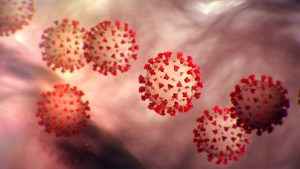More than 60 COVID-19 deaths, 4,400 new cases reported in Illinois
By Jerry Nowicki Capitol News Illinois — October 21, 2020
SPRINGFIELD – The Illinois Department of Public Health reported another 69 COVID-19 related deaths Wednesday, Oct. 21 a new single-day high since June 17, when there were 84.
While 42 of the deaths reported Tuesday, Oct. 20 came in people aged 80 or older, the death toll also included a male in his 30s, two females in their 40s, four people in their 50s, seven people in their 60s, and 13 people in their 70s.
The state also reported another 4,342 new cases of the virus among 66,791 test results reported over the previous 24 hours. That brought the total virus-related death toll to 9,345 among 355,217 confirmed cases reported since the pandemic began.
Nearly 7 million COVID-19 tests have been conducted in the state since the pandemic began, and Gov. J.B. Pritzker said in a news conference Wednesday the state sent out its first shipment of a new test that will help increase that capacity.
The Abbott Labs BinaxNOW tests are rapid tests recently purchased and distributed to states by the federal government. Illinois has shipped 170,000 to local health departments, Pritzker said.
“The federal government and Abbott have indicated that these shipments will continue on a weekly basis through at least the end of 2020 and will total over 3 million tests for the state of Illinois,” Pritzker said, noting they are manufactured in Illinois, where Abbott has hired more than 2,000 employees in their Gurnee manufacturing plant.
Pritzker said the state is “piloting their usage in several different settings in order to gather more data about their accuracy and sensitivity, and then adjusting our plan to achieve the maximum impact.”
Pritzker said local health departments can choose to distribute their tests where needed locally, including for schools, to first responders, at federally-qualified health centers, and to homeless service organizations.
He said the state would also use some of the tests to launch pilot testing programs in schools, long-term care facilities, state-owned veterans homes and possibly other locations.
Right now, the number of tests producing positive COVID-19 results are increasing everywhere in Illinois.
Every region of the state’s COVID-19 mitigation plan now has a test positivity rate of at least 7 percent, while four regions remain above the 8 percent threshold that triggers more state mitigations. These include Region 1 in northwest Illinois at 11.6 percent, Region 5 in southern Illinois at 8.9 percent, Region 7 in Will and Kankakee counties at 8.7 percent, and Region 8 in DuPage and Kane counties at 9.2 percent.
Pritzker noted Region 7 had less than 23 percent of intensive care unit beds open for COVID-19 surge capacity, while hospitalizations for COVID-19 were increasing statewide as well.
“We are continuing to see increased cases, increased hospitalizations and increased deaths. And we have to all take our role and personal responsibility in helping turn this around,” IDPH Director Dr. Ngozi Ezike said, urging Illinoisans to wash hands, wear face coverings, remain six feet away from others in public and get their flus shots.
That comes as the statewide positivity rate increased for the 17th straight day to 5.7 percent, a number driven down by University of Illinois saliva testing which yields low positivity rates but is not included in any of the regional metrics.
Region 9, which includes north suburban Lake and McHenry counties, jumped to 7.7 percent after increasing for nine of 10 days, Region 4 in the Metro East area on the Missouri border jumped to 7.6 percent after increasing for eight of 10 days, and Region 6 in east-central Illinois decreased slightly to 7.5 percent after increasing for five of 10 days.
Region 3 in the Springfield area and several surrounding central Illinois counties saw its rate decrease slightly to 7.4 percent, the first decrease in the past 10 days. Region 2, which includes Peoria and several surrounding counties, increased for the eighth time in 10 days, reaching 7.1 percent.
While Chicago (7 percent, Region 11) and suburban Cook county (7.2 percent, Region 10) remain among regions with the lowest positivity rates, they have been increasing for 10 of 10 days and nine of 10 days, respectively.
Intensive care beds in use by COVID-19 patients jumped by 13 to 502 at the end of Tuesday. Hospital bed usage for COVID-19 increased to 2,338, an increase of 3.4 percent from the day prior. Both were once again highs not seen since June, while ventilators in use by COVID-19 patients decreased by one from the day prior to 194.
Pritzker and Ezike also gave an update on the state’s plan for distributing a vaccine, although there is still no telling when one will be available and at what quantities.
“Let me be clear: Illinois will not distribute a vaccine until we have one that is proven safe and effective,” Pritzker said. “We have a highly qualified team of experts from the private and public sectors teamed up to evaluate the public data and process when the vaccine data is made available over the coming weeks or months. And I’ll make sure that you can hear from them when the time comes.”
Illinois’ plan “is designed to provide an equitable distribution across the state with priority access going to our most vulnerable populations,” Pritzker said, noting the vaccine would be free. It would first be targeted to frontline health care workers when available.
In order to achieve herd immunity, Ezike said, about 80 percent of Illinoisans would have to be vaccinates, although she said the vaccine will not be mandated.
jnowicki@capitolnewsillinois.com








